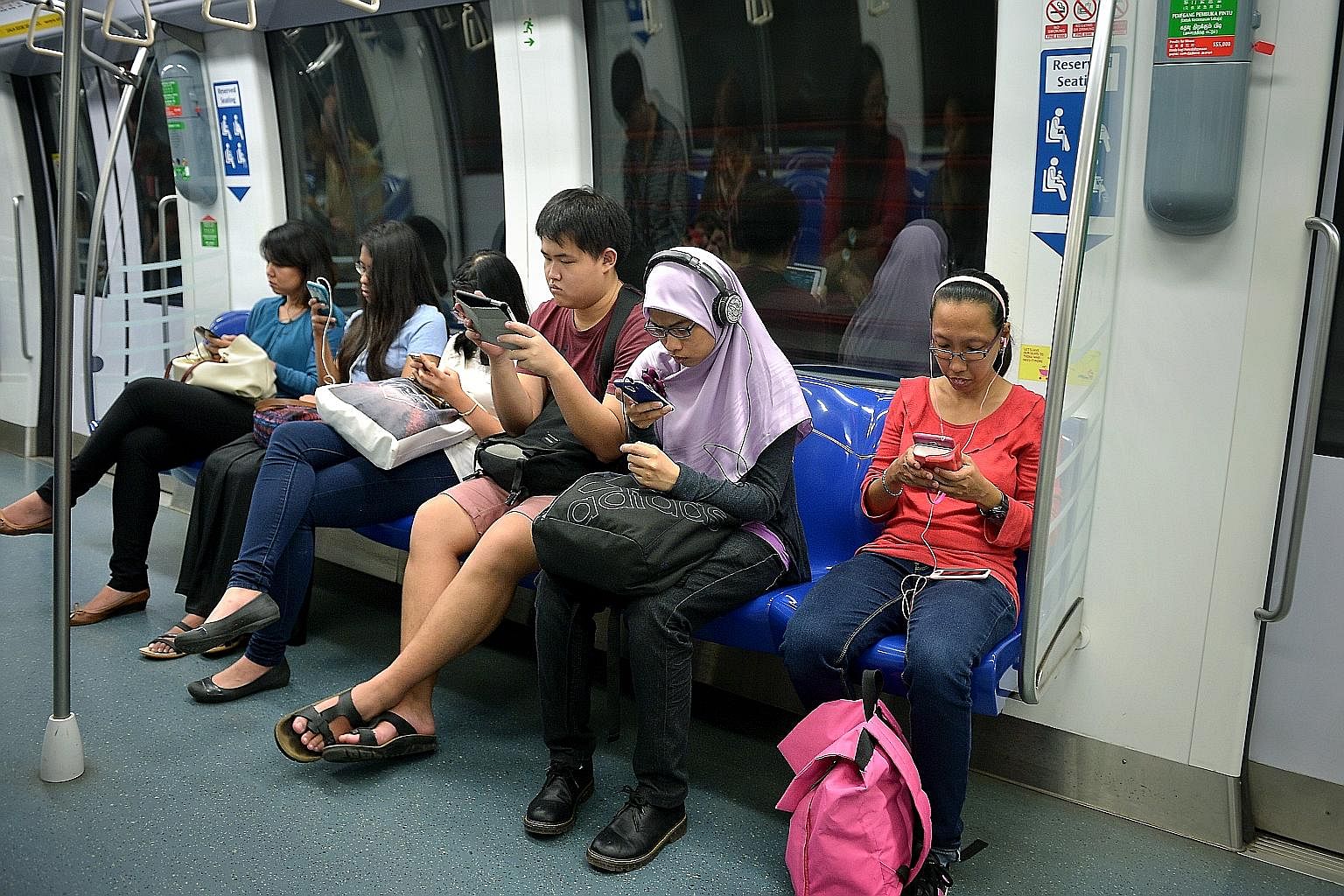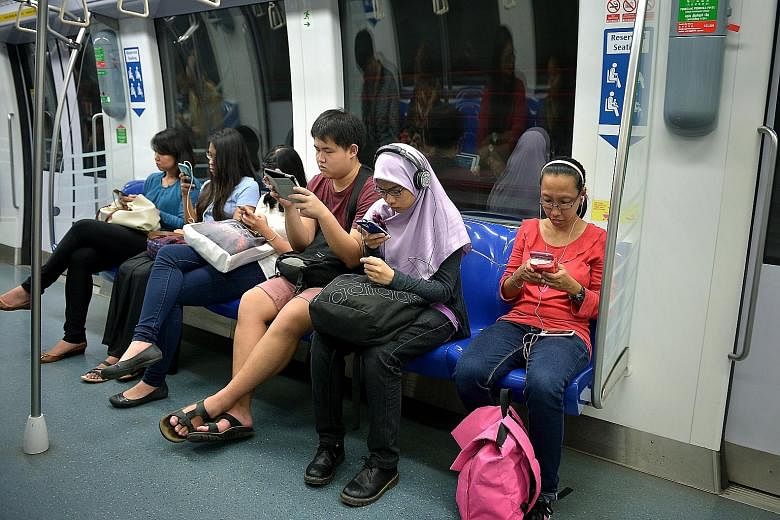The three local telcos are fighting tooth and nail over a sliver of airspace in Singapore.
The fight stems from a recent proposal by the Infocomm Development Authority (IDA) to set aside a large block of mobile frequencies in the lower spectrum - which are premium slots - at a heavily discounted rate for a potential fourth telco to facilitate its entry.
In their response to the IDA, reported in The Straits Times on Sept 8, Singtel, StarHub and M1 delivered what amounted to a doomsday warning: Consumers' mobile connections would suffer.

They said there would not be enough of the premium spectrum to be shared among the big boys to provide service for some eight million mobile subscribers if the fourth player got a huge chunk of it.
While it may be true that the argument of the existing telcos is self-serving, they cannot be completely discredited.
The hotly contested airspace exists in the 900MHz frequency range. It is a premium range as it allows for better signal propagation, especially through concrete, with less mobile equipment. In short, telcos can provide mobile signals to the whole of Singapore, as well as indoors, with minimal equipment. This translates into lower installation costs.
Conversely, losing the rights in this space could increase the amount of equipment required by a telco by at least 20 per cent, according to some estimates. The extra cost depends on factors such as equipment pricing and rents on sites where the additional hardware has to be installed.
In an upcoming airwave auction slated for early next year, all the usable frequencies in the 900MHz range will be up for sale.
CROWDED SPECTRUM
Singtel, StarHub and M1 will have to participate in the auction as their existing rights to this spectrum will expire in March 2017.
And, as if throwing a curve ball at the existing telcos, IDA wants to reserve one-third (or 20MHz worth) of what goes on sale for the potential newcomer. This will leave the three existing telcos with a substantially reduced share of this premium airspace.
StarHub may not be affected much as IDA is reviewing whether to give the telco the first right of refusal for a block that the telco currently holds. But the same cannot be said for Singtel and M1, which would have to slug it out in the upcoming auction. There could be a bloodbath.
Retaining their current holding is especially important for Singtel and M1. Unlike StarHub, the two telcos have based most of their existing mobile networks on the 900MHz spectrum.
A reduced share of the right to use this airspace means that network quality - particularly voice connections - would suffer unless they quickly migrate their technologies to other frequencies.
The frequencies Singtel and M1 can immediately use are those in the higher 1,800MHz spectrum. But they would need to install more mobile base stations to achieve the same coverage, incurring extra costs deemed to be unnecessary.
This is why the fight is so intense - even before the auction begins.
In its written feedback to IDA, Singtel said: "Singtel Mobile is concerned that the IDA's recommendations will disrupt the market and the experience of existing users by allocating scarce resources to a new entrant solely on the grounds that the IDA wishes to see a new entrant in the market."
StarHub wrote: "If any (telco) does not have access to the 900MHz spectrum, come 2017, there would be severe deterioration of 3G services, and potential disruptions to a large number of mobile customers in Singapore."
M1's response summed up the obstacles existing telcos face if they had to migrate their technologies. "Without any 900MHz spectrum for deployment to meet IDA's stringent mandated 3G requirements, a significant increase in the number of base stations will be needed to address the challenge in achieving in-building coverage," it said.
"Notwithstanding the costs involved, the practical difficulty in acquiring more than 1,000 additional sites will result in a prolonged period of poor customer experience and degraded 3G service."
IDA, which has not issued a decision, has a tough call to make.
Singtel suggested the potential fourth telco be allocated frequencies in the 800MHz range, which are not on sale in the upcoming auction. There is a small block which can be used for mobile purposes, the telco said.
The Straits Times understands that parts of the 800MHz spectrum are used for police communications and walkie talkies. At the end of it all, consumer interest must come first. Having more competition is good. But IDA's plan to ease in a fourth telco cannot come at the expense of consumers, no matter how briefly.


